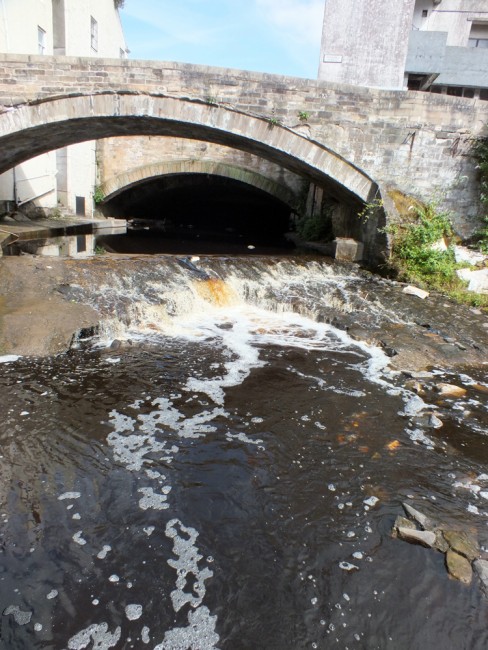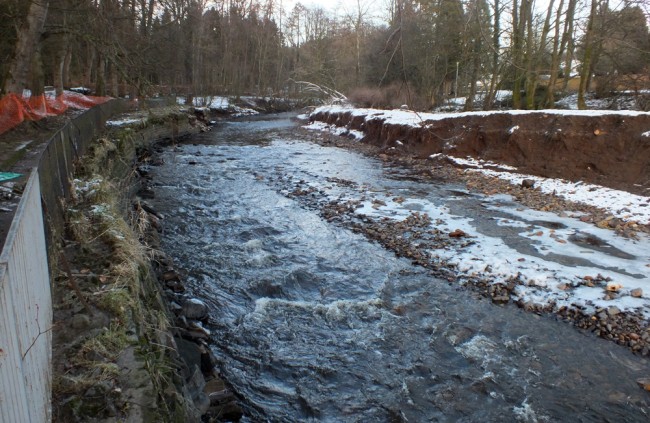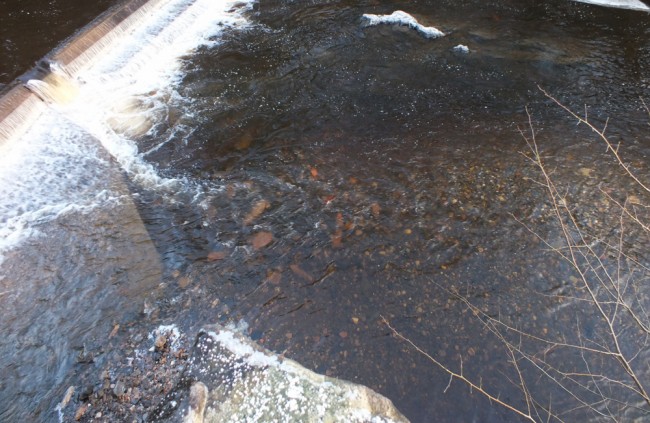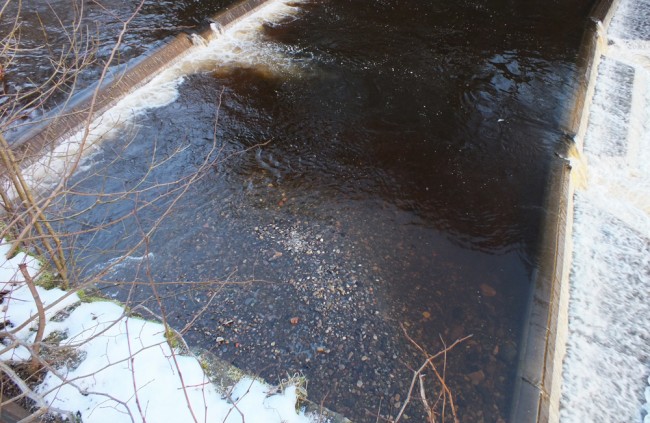Two or so years since I first reported to Scottish Water that the weir at Cheapside Street in Kilmarnock was crumbling as a result of the work in the Kilmarnock Water, today I attended a meeting with Scottish Water, SEPA and Aecom to discuss options on stabilising the weir and installing a fish pass.

The weir at Cheapside Street last summer. In it’s current state it was easily passable but there is a significant risk of collapse that has to be addressed. Within the weir itself is a sewer pipe crossing the river and this presents a huge risk to the environment should it collapse.
The proposed design was for a Larinier Super Active bottom baffle fish pass installed in the weir with a resting pool/tank on the concrete apron downstream. Whilst this all sounds good in principle, I felt that there may be a better solution worth consideration…. a rock ramp. The problem I see with a Larinier Pass is that downstream of the weir, the bed is concrete for about 50m across the full width of the river and there is nowhere for fish to rest. Also a small resting pool could be difficult for fish to find and fish could easily be washed back downstream in heavier flows when salmon and trout may be expected to run. Finally, the volume of mobile substrates on this wee river would quickly accumulate in the resting pool making it ineffective and require regular maintenance. I was pleased that my suggestion of a rock ramp was discussed at length and not dismissed out of hand. The designer is going too explore this suggestion further as I think everyone could see potential benefits from such a solution. Scottish Water agreed that the maintenance issue was off-putting for the Larinier solution.
Currently, there are huge amounts of gravel moving within the river and this may be expected to continue for some time as the replacement bridge at Dean Ford has led to significant gravel movements occurring both up and downstream of the site. This may settle down in time but the Kilmarnock Water does experience large sediment movement anyway so this should be factored into the solution at Cheapside Street.

The new bridge at Dean Castle. Tonnes of gravel have been mobilised as a result of the works and this will continue for some time until the river bed finds it’s new level.

The view upstream of the bridge where the bed levels have cut back upstream changing the character of this stretch of the river. Further changes may be expected for some time. Just out of view of this photograph the pool at the bend is changing so just how much further the influence of the ford removal will reach is anyones guess. This is all good news for future spawning as there is likely to be no shortage of good gravel beds available to the fish
I visited Black Rocks today and the weir pools and the deep pool below the weirs have filled with tonnes of gravel recently as can be seen in the photos below. This shouldn’t present too much of a problem as large spates appear to keep the centre sections free of gravel.

Once a deep channel of around 8′, this pool downstream of the lower weir has completely filled with gravel, particularly since the work upstream at Dean Ford commenced.
Although the solutions haven’t yet been agreed, I am encouraged that the works to Cheapside Street Weir will take place this summer and whatever solution is finally adopted, it will mean that the fish should have a clear run from the Irvine to upper reaches of the Fenwick and Craufurdland Waters for years to come. I’m looking forwards to electrofishing season already to see how far up these systems salmon managed to reach and spawn this winter.


